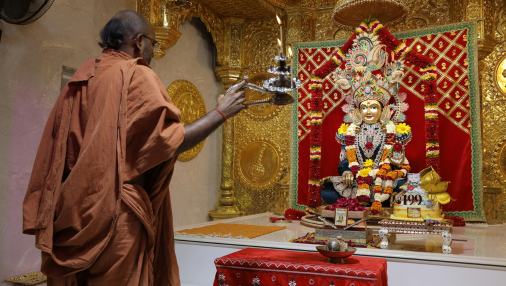Introduction
Delhi, the capital city of India, is not only known for its bustling streets, historical monuments, and modern infrastructure but also for its spiritual landmarks. Among the many temples that enrich the city’s cultural fabric, Kalkaji Mandir holds a special place. Dedicated to Maa Kali, an incarnation of Goddess Parvati, this temple is one of the most revered pilgrimage sites in North India. Situated in the heart of South Delhi near the famous Lotus Temple, the temple attracts millions of devotees every year.
In this guide, we’ll cover the history, significance, architecture, best time to visit, how to reach, and travel tips for making your visit to Kalkaji Mandir a fulfilling experience.
History and Significance of Kalkaji Mandir
Kalkaji Mandir is believed to be one of the oldest temples in Delhi, with its origins tracing back to the Mahabharata period. According to legend, the Pandavas and Kauravas worshipped Goddess Kali here before the great war. The temple is dedicated to Maa Kali, the fierce form of Goddess Durga, symbolizing the victory of good over evil.
The idol of Maa Kali in the sanctum sanctorum is said to be self-manifested (Swayambhu). This belief enhances the temple’s spiritual significance, drawing thousands of devotees who come to seek blessings for strength, protection, and prosperity.
The temple is especially famous during the Navratri festival, celebrated twice a year (Chaitra in March–April and Sharad in September–October). During these nine days, the temple is adorned with lights, and thousands of pilgrims from across India gather here for special rituals and bhajans.
Architecture and Layout
The present-day structure of Kalkaji Mandir was rebuilt and renovated over time with contributions from devotees and local communities. The temple has an octagonal structure made of marble and black pumice stones, giving it a distinct appearance. The sanctum houses the revered idol of Maa Kali, and devotees often light diyas (lamps) and offer flowers.
The temple complex also includes small shrines dedicated to other Hindu deities, creating a spiritual environment. Surrounding the main temple are dharamshalas (rest houses) and stalls selling prasad, religious books, and offerings.
Best Time to Visit Kalkaji Mandir
- Navratri Festival: The temple is at its peak grandeur during Navratri. Though it is extremely crowded, witnessing the celebrations is a lifetime experience.
- Weekdays: If you wish to avoid long queues, weekdays early in the morning or late evenings are ideal.
- Morning Aarti: Attending the aarti (ritual prayers) is highly recommended for a divine experience.
How to Reach Kalkaji Mandir
The temple is easily accessible due to its central location in South Delhi.
- By Metro: The nearest metro stations are Kalkaji Mandir Metro Station (Violet Line and Magenta Line) and Nehru Place Metro Station. Both are within walking distance.
- By Road: Autos, taxis, and buses are readily available. The temple is located near Nehru Place, one of the busiest commercial hubs in Delhi.
- By Air/Rail: From Indira Gandhi International Airport (approx. 20 km) and New Delhi Railway Station (approx. 15 km), taxis and metro services are the best options.
Things to Do Around Kalkaji Mandir
- Lotus Temple: Just a short walk away, the Lotus Temple is a symbol of peace and unity.
- ISKCON Temple: A spiritual center for devotees of Lord Krishna located nearby.
- Nehru Place Market: Famous for electronics and street food, it’s a great place to explore after your temple visit.
- Okhla Bird Sanctuary: Nature lovers can enjoy birdwatching just a short drive away.
Travel Tips for Visiting Kalkaji Mandir
- Timings: The temple is typically open every day from early morning to late evening. Check local listings for exact aarti timings before you go.
- Dress Code: Modest clothing is recommended. Carry a scarf or dupatta if possible.
- Footwear: Shoes must be removed outside the temple premises. Paid shoe-keeping counters are available.
- Safety: Keep your belongings safe, especially during Navratri when the temple gets overcrowded.
- Offerings: You can buy flowers, coconuts, and prasad from stalls outside the temple.
- Photography: Photography inside the sanctum is restricted, but you can take pictures outside the temple complex.
Why Visit Kalkaji Mandir?
Kalkaji Mandir is not just a religious destination; it is an experience of faith and devotion. Whether you are a spiritual seeker, a history enthusiast, or a traveler exploring Delhi’s cultural heritage, this temple offers a glimpse into India’s deep-rooted traditions. The chants, the fragrance of incense, and the sight of devotees with folded hands create an atmosphere of divine energy that lingers long after your visit.
Conclusion
A visit to Kalkaji Mandir is more than just a temple visit—it is a journey of inner peace and devotion. Its historical roots, architectural beauty, and spiritual importance make it one of the most sought-after religious landmarks in Delhi. Whether you plan to visit during Navratri for the grand celebrations or on a peaceful weekday morning, the temple welcomes everyone with open arms.
So, next time you’re in Delhi, don’t miss the opportunity to experience the blessings of Maa Kali at Kalkaji Mandir.


